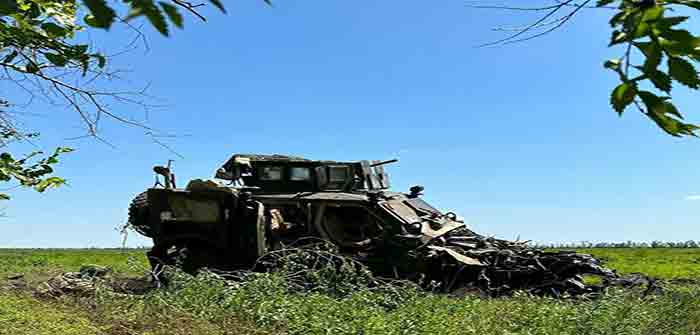
by @Slavyangrad at Telegram
How the “Surovkin Line” Works: Analysis
Since June 4th, the AFU have launched 263 attacks on Russian positions as part of the ongoing counteroffensive. All attacks were repelled, but few understand why the Ukrainian army’s offensive failed at its peak.
What is the “Surovkin Line”?
It is a defensive system, the first layer of which consists of dozens of fortified fire lanes, including extensive minefields and engineering barriers. This line took nearly eight months to construct, and extends several tens of kilometers in depth. It relies on a well-developed transport and logistics network with hubs and rear bases. Short logistics routes allow the Russian Armed Forces to swiftly transfer reserves from one sector to another without compromising combat readiness on the front line. In simpler terms, wherever the need arises to reinforce firepower, it can be done without withdrawing troops from other sectors.
What is unique about it?
The defensive line is supported by a powerful grouping of artillery and air forces, including Ka-52 attack helicopters and ground-attack aircraft equipped with FAB-250/500 guided glide bombs. In the event of a breakthrough by an AFU mechanized group at one of the fire lanes, aviation is capable of supporting ground forces operating in a “carousel” fashion: while helicopters engage ground targets, strike aircraft and bombers reach the launch point, and after hitting their targets, the helicopters reengage, and the cycle repeats. Meanwhile, strikes on the rear areas of the advancing AFU group in Orehovo and Velikaya Novoselka demonstrate that the AFU offensive has limited air defense. Medium- and short-range air defense systems are either deployed deep in the rear or used very sparingly on the frontline. As a result, a significant amount of senior command staff is being destroyed in the rear, which hampers command and control and, consequently, slows down the pace of the offensive.
What is “elastic defense” and how does it work?
Judging by the dynamics of the offensive, the AFU command undoubtedly relied on a swift breakthrough and the transition of the battle to maneuver warfare. For this purpose, a series of strikes across the Line of Contact was planned, including main attacks and several diversions. These strikes were countered by a combination of tactics known as elastic defense and an artillery grouping, enhanced by observation and fire correction means. It is evident that the Russian Armed Forces on the ground are still operating with comparatively small forces, and the maneuvering element, in terms of operational and tactical reserves, has not yet entered the battle. In the cases of Pyatyhatky in Zaporozhia or Neskuchnoe in the South Donetsk direction, it is clear that Russian forces do not cling to every centimeter of the defensive line in the event of a breakthrough by individual AFU groups. If necessary, they withdraw to reserve positions. The enemy, located then at pre-known coordinates, is subjected to artillery strikes, followed by a counterattack, and the position is returned under the control of the defending forces. Judging by the fact that two weeks after the start of the AFU offensive, they continue to suffer losses from artillery fire, their reconnaissance and counter-battery capabilities are either ineffective or insufficient.
What is the result?
During more than two weeks of the Ukrainian offensive, AFU advances have been observed solely within the gray zone, meaning on territory forward of main Russian defense lines. The AFU has failed to fully seize control of these areas—every attempt to consolidate and expand the bridgehead leads to artillery strikes and air raids, forcing Ukrainian forces to retreat and regroup for a new strike.
https://t.me/SLGmaps/336
https://t.me/+B6ixfOM5VkxhODQx
@Slavyangrad
Join SLG 🔺 Intelligence Briefings, Strategy and Analysis, Expert Community
